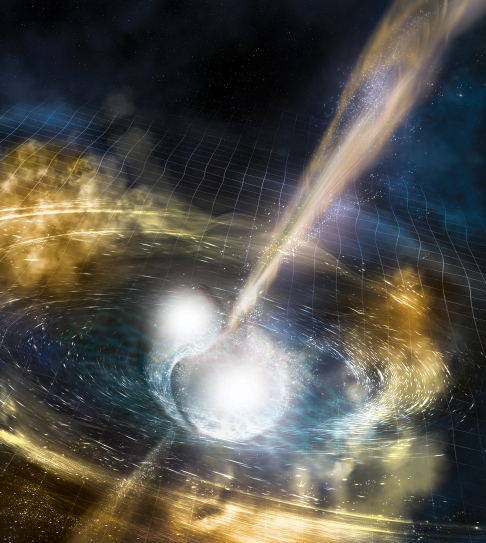The merger of two neutron stars, one year on: GW170817

[Credit: NSF/LIGO/Sonoma State University/A. Simonnet]
B. F. Schutz
Posted on August 20, 2018
Last Friday we celebrated the one-year anniversary of an event that those of us who were involved will never forget. The Virgo gravitational-wave detector had joined the two LIGO instruments on August 1, 2017, and the three detectors had since then been patiently listening out together for gravitational wave sounds coming from anywhere in the Universe. On August 17, the deep quiet was interrupted by a squeal, a chirp lasting much longer and going to a much higher pitch than the GW150914 chirp that had launched the field of gravitational wave observational astronomy two years earlier. We named it, prosaically, GW170817.
This one-minute-long squeal was followed by an incredible explosion that radiated intense gamma-rays, X-rays, light, radio waves — right across the whole electromagnetic spectrum. What came first was a burst of gamma-rays, just 2 seconds after the end of the squeal. Then it began brightening up at other wavelengths. The explosion itself did not register in LIGO and Virgo, because as it rushed out in all directions it was too smooth to generate gravitational waves. But astronomers at their telescopes saw it: a kilonova, a new type of cosmic explosion.
See full text